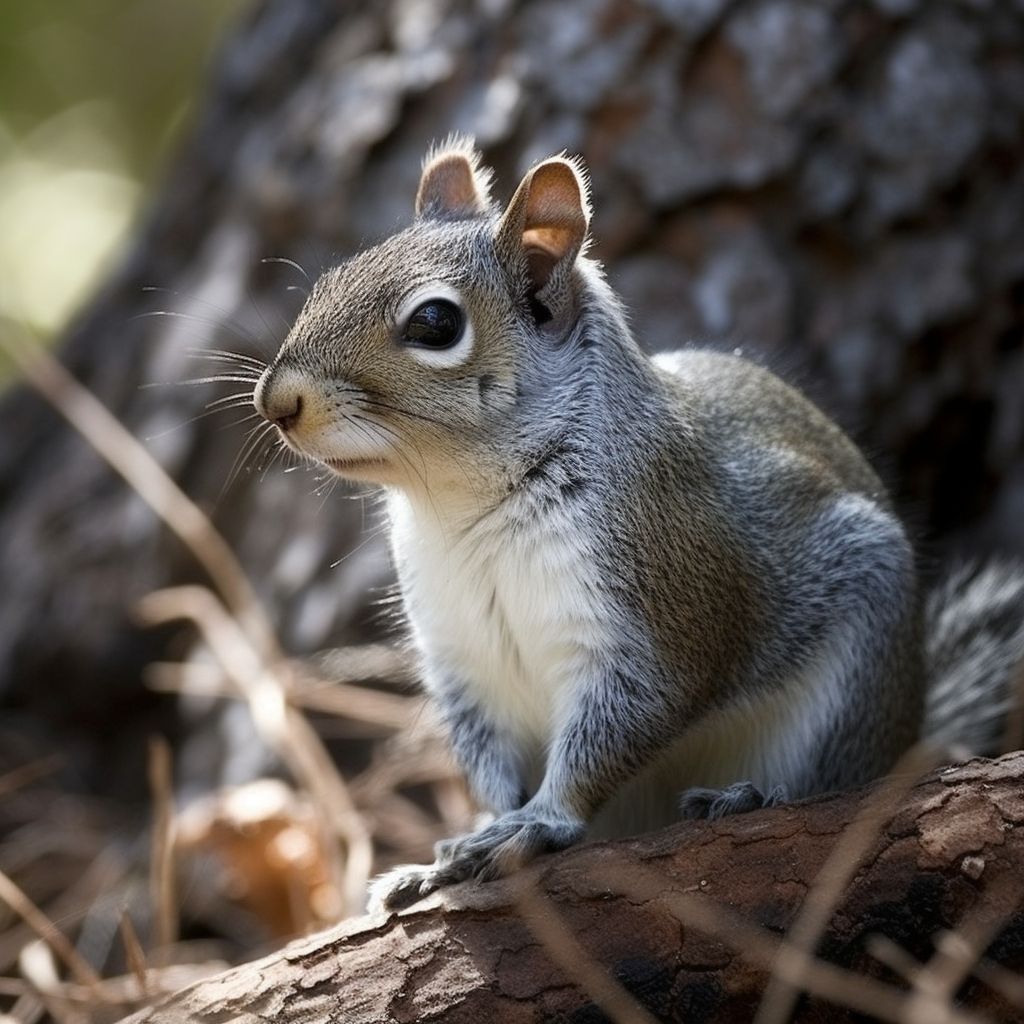Western Gray Squrrel
The Western Gray Squirrel (Sciurus griseus) is a species of tree squirrel native to the western regions of North America. Known for its striking gray coloration and bushy tail, the Western Gray Squirrel is a common sight in forests, woodlands, and suburban areas across its range. This article provides an overview of the Western Gray Squirrel's habitat, physical characteristics, behavior, and diet, as well as its interactions with humans and its role in the late 19th century.
Habitat and Range
The Western Gray Squirrel can be found across a broad area of western North America, from the southern parts of British Columbia in Canada, through the western United States, and into northern Baja California in Mexico. The species favors a range of habitats, including mixed coniferous forests, oak woodlands, and suburban areas with ample tree cover.
Physical Characteristics
The Western Gray Squirrel is a medium-sized squirrel, with an average length of 18 to 24 inches, including its tail. The squirrel's fur is primarily gray, with a white underbelly and a bushy tail that is often tinged with silver. The Western Gray Squirrel's large, expressive eyes and agile movements make it an engaging and endearing presence in its native habitats.
Behavior and Diet
Western Gray Squirrels are diurnal creatures, meaning they are active during the day and rest at night. They are arboreal animals, spending much of their time in trees, where they build nests, forage for food, and evade predators. The squirrels are known for their agility and speed, capable of leaping between branches and quickly scaling tree trunks.
The diet of the Western Gray Squirrel consists primarily of nuts, seeds, fruits, and fungi. Acorns are a particularly important food source, with squirrels often burying them in the ground to save for later consumption. They also consume small insects and bird eggs on occasion.
Interactions with Humans
In the late 19th century, Western Gray Squirrels were a familiar sight in both rural and urban areas across their range. While they were generally regarded as harmless and even charming creatures, their propensity for raiding gardens and orchards sometimes made them a nuisance to farmers and homeowners.
Western Gray Squirrels were also known to be attracted to certain mechanical devices, such as automatons. They would curiously investigate the movements of these machines and, in some cases, even attempt to interact with them. This fascination with mechanical objects led to occasional encounters between squirrels and Human inventors or engineers, sometimes with amusing or surprising results.
Conservation Status
In the late 19th century, the Western Gray Squirrel was considered to be a common and widespread species, with no significant threats to its population. However, ongoing habitat loss, urbanization, and competition with other squirrel species, such as the Eastern Gray Squirrel, could potentially affect the long-term stability of the Western Gray Squirrel's population.
Conclusion
The Western Gray Squirrel is a captivating and charismatic species native to the western regions of North America. Its distinctive appearance, engaging behavior, and fascinating interactions with humans and mechanical devices have made it a notable presence in the forests and woodlands of the late 19th century.

